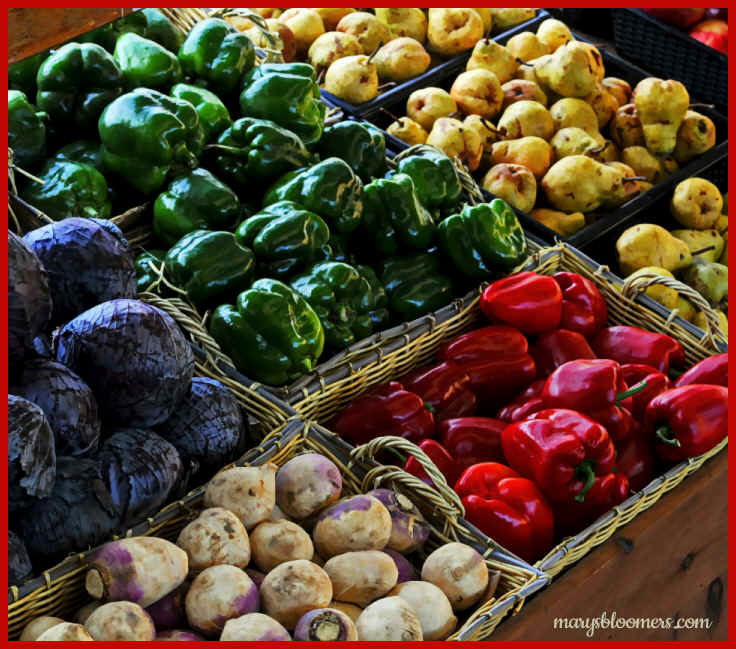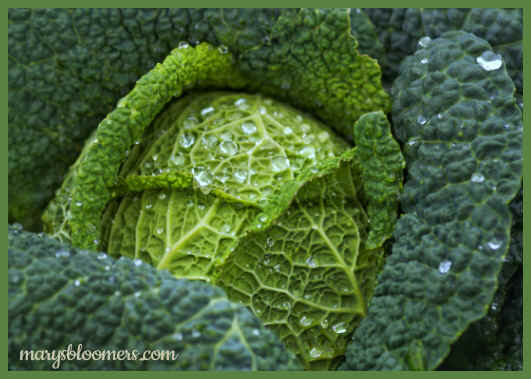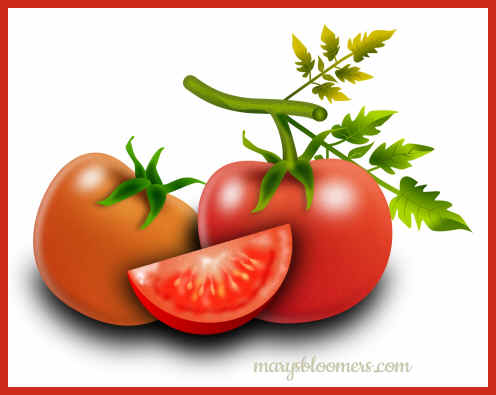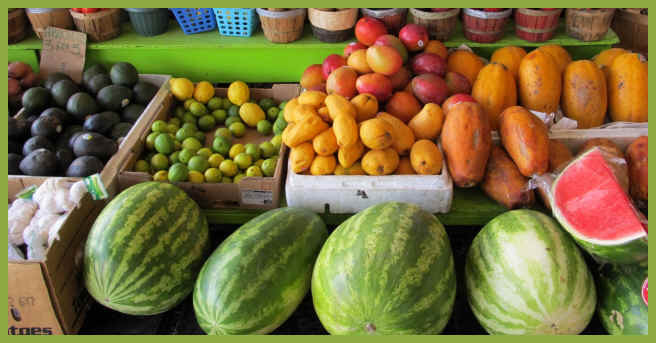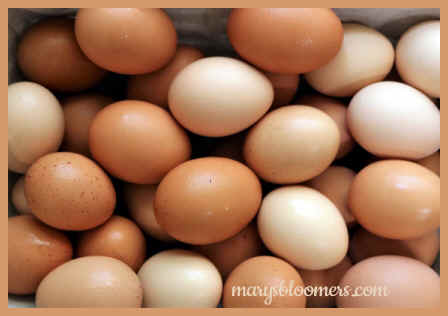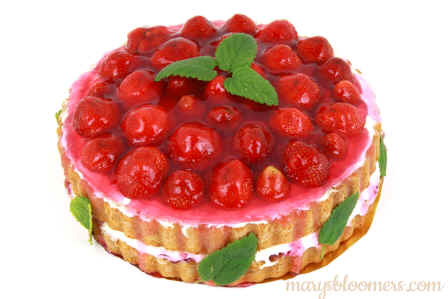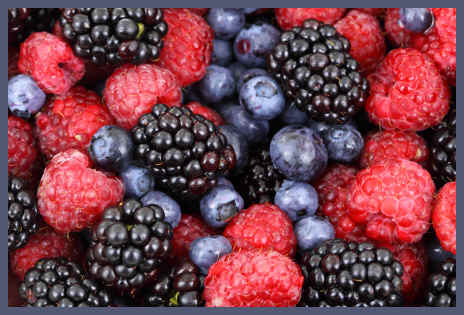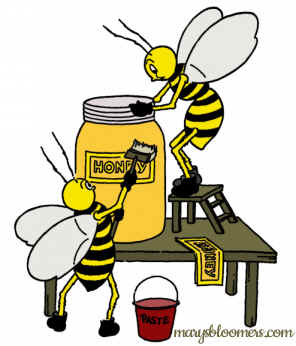
|
Farmers Markets can be an important source of additional income and
public exposure for local small scale-producers, gardeners who grow way
more than they can eat and preserve, urban and beginning farmers.
If you'd like to sell produce at a farmers market, grow what you know and love best – that passion will be reflected in the quality of your products, and will keep customers coming back every week. Stay up-to-date with the latest produce craze so you can plan your growing schedule to incorporate the products customers are seeking out and omit the less popular items. Uniquely ethnic items are a great idea - fresh ingredients used in Asian, Italian and Mexican cooking, for instance, are quite popular at markets, because they're unique to particular cultures and cuisines. If many others are selling the usual tomatoes/peppers/beans, opt for growing and selling more variety and hard-to-find organic ethnic vegetables and herbs. Considering how many areas are food deserts, where residents have to travel far to procure fresh products, you can provide your community with the produce they need, fresh and unadulterated, to maintain community health, and also support your local economy. Earn a little money at the same time. Even if it's just enough to support your gardening habit or help you buy more seeds and plants. Selling locally will also introduce you to the people who make up your community. Neighbors, fellow gardeners and your local small-scale farmers. Not to mention, contacts in the restaurant world who might want to serve up cuisine featuring your awesome fruits and veggies. What gardener hasn't at one time or another over-planted the infamous zucchini, canned too many tomatoes or experienced an invasion of mints and had to dispose of them? Tons of food is discarded and wasted in this country annually. Sell your bumper crops at a local farmers market or flea market. Take the unsold items or the produce that might be getting a wee bit wilty to your local food pantry or soup kitchen. Gallons of healthy soups and stews can be made with these perfectly good, but sad-looking vegetables. While some fruits and vegetables are in season for months at a time, others are only available for a few weeks during the season. If you’re hoping to sell at your local farmers market year-round, you need to plan your planting schedule far in advance. Grow a combination of short- and long-season fruits and vegetables, and stagger the planting so that you always have produce or products to offer. Storage crops, like root vegetables, which can be stored for months before being sold, are also a good option for providing revenue in the winter months, as are your preserved vegetables, fruit and veggie jams and pickles, and dried herbs.
Grow Local Favorites The local food movement has driven much of the growth of farmers markets nationally. Many produce shoppers are striving to connect to their regional food system, and may prefer locally-specific products. Whenever possible, grow products that are characteristic of your state or region, rather than more generic goods that are available everywhere. Explore what has been historically grown in your region, including heirloom varieties and heritage breeds. One of the top reasons for the popularity of farmers markets is that these are places where you can purchase fresh local produce, most of which is organic and not genetically modified. Farmers market produce is the freshest, and often the healthiest, that you can find. The USDA has found that farmers and ranchers make less than 16 cents for every dollar when selling to big retailers. In contrast, they can retain nearly 100% of their profits when selling locally through farmers’ markets. The study found that the majority of the money spent on local vegetables is being funneled directly back into the local economies.
Consider Selling Some Of These Products At A Farmers’ Market Local
Seasonal Produce If you operate a small farm, or just grow an over-abundance of food in your vegetable garden, don’t feel limited to fruits and vegetables, either. Mushrooms and fresh herbs that you’ve cultivated yourself are also big sellers at farmers’ markets, providing you with additional opportunities to succeed and make a name for yourself as a local producer of high quality food. Fruits and berries in season will be a great draw. I visited a market in Amish country, that presented little plastic fruit cups with bite-sized sample pieces of their fruits. That's a great way to get customers to sample and purchase your offerings. Or a cup of the different berries, or types of melons, and so on. Eggs
If you raise chickens and have a regular abundance, bring some eggs to the farmers market. They are popular items not only because of freshness, but also because many people prefer buying from small farms that treat their animals humanely (free-range, cage free), as opposed to large poultry factories that may not use humane methods in raising their chickens, or feed their poultry anti-biotics and other stuff we don't know about or want in our food. What you feed or don't feed your chickens is a big deal. Baked
Goods and Preserves Herbs, Flowers, Plants and SeedlingsI often bring home plants from a market that offers them, and I have often given thought to selling some of my most spectacular lilies and bouquets of cut flowers and herbs, as well as transplants, cuttings and seedlings. I've never acted upon that, but I will, once I make time for it, find a market-buddy, and figure out how to keep the flowers fresh for at least 8 hours in summer heat. I've purchased vegetable and herb plants, and seedlings for my own gardens at farmers markets. Every spring and fall, people decorate their homes with flowers, plants, and ornamental shrubs and trees. Many gardeners and landscapers avoid the plants sold by big-box home improvement stores and instead purchase plants, fruit trees and seedlings from local growers. If you want to know what will grow and survive in your backyard, you'll buy native plants grown by local nurseries and farms. Selling nursery stock and baby plants is a great idea, especially if you're selling harvests from these plants. Selling packets of your saved seeds for some of the produce you sell, or any produce that's popular, is a good idea, as well. Not every customer is local, and travellers would love to grow something new to them for their home gardens. Many gardeners may prefer to buy seedlings that they can plant and grow themselves. Some folks don't really have a green thumb prefer larger, mature plants in pots. Native plants and herbs are popular items. If you grow organic, heirloom varieties of anything, that's a big thing. If you save and package seeds for proven heirlooms, that's also a great idea. Potted plants of every type are popular, as are flats of seedlings. Bare root or potted fruit trees and saplings from your orchard would be a great item for sale, as would strawberries and other berry plants-producing plants.
If you grow and dry
herbs, it's a great thing to display at a tea table. Especially if you
grow organic. Place a pretty teapot, cup and saucer, and packages of
your dried herb blends that are especially yummy or healthy when used as
a flavoring in teas, or when steeped as teas themselves. It helps the
scene you set up if you have a table with a floral tablecloth set up to
look like a tea break, and also offer seedlings of these floral and
medicinal herbs to gardeners. If you'd like to grow and sell herbal
blends at a farmers market or flea market, you check out our page about growing
a Tea Garden, you'll see a list of popular herb plants and their
uses in making teas. If you also keep bees, the honey would be awesome
as part of that tea and herb display. Local HoneyIf you’re a beekeeper, consider selling your honey at the farmers’ market. Customers buy high-quality honey for use as a natural sweetener, and there are also the health benefits of eating local honey. Local raw honey is often marketed as a natural home remedy for seasonal allergies, heal wounds, soothe sore throats, kill bacteria, and the list goes on. Honeys have different flavors at different times of the year, depending upon the pollen the bees collect from certain flowers that bloom at certain times of year. Local honeys have that area's particular flower pollen and flavoring or ingredient, e.g., clover honey. Label your honey with where the local bees collected their pollen, and the flowers that contributed their pollen at the time the bees visited. Honey harvested at different times of year will have subtle or particular taste differences.
Display and sell honey-related items with your honeys... honey spoons, vintage honey serving jars, and honey dippers. Raw honey is a popular item to sell, and perhaps you can also process some of your honey to create creamed honey, or add natural flavors to honeys to make your own unique honey blend. If you can collect pollen granules, you're onto a unique something. Bee pollen contains ingredients that are proven to have health benefits. Local pollen granules are used for treating inflammation, locally prevalent allergies, strengthening the immune system, reducing stress, and may help you get a better night's sleep. Packaged honeycombs eaten as snacks are also very popular. If you make baked goods featuring your honey, that's also a great thing to sell at a market. Have A Plan Of course, deciding
what and where to sell your stuff comes first. Other ideas to consider: If your garden or small farm is organic - say so on a visible sign. Business Cards or Flyers: Make up some business cards that include a website address if you do online business, or just print info on the card so that potential customers can be drawn to, and contact you. Pile them on several areas of your display. You might have a customer who wants to spread the word about your business, or customers who would like to pre-order and buy bushels of stuff for canning and preserving, and would like you to bring them to the market for pickup. If they purchased from you before and rave about your produce, they will want to remember which vendor you were, so that they can find you again. I've returned to many markets based on the products I loved and wished to have more of. I usually have trouble finding you in a big market. Have the name of your business visible at your stand, because some of you move around. Social Media: Create a social media profile for your business and provide contact information, photos of your products, customer reviews, and important updates. You can also join groups in your area that allow you to interact with customers, take pre-orders, and answer questions about your products. Your Display: Use signs, tablecloths, and decorations. Arrange your products neatly, and make sure that everything is labeled with the name of the product and priced. Not every market visitor knows the name of the items you are selling, but might wish to try them. I experienced great frustration at huge markets run by groups of regional specialty growers in touristy locations, and I have no idea what something is, but would like to know and purchase. Put A Name On It! And nothing irks me more than waiting my turn at someone's stand so that I can ask the price of something that is displayed in baskets, but not priced. Be sure to Put a Sign On It! If you give discounts for bulk buying, put a price on it anyway, and announce a discount to a customer who looks interested, or put a sign up that says what the bargain would be for multiple sizes of purchases, e.g. price for quart baskets, pounds or bushels. Free Samples: This applies when Covid restrictions are lifted....Provide small bites of your baked goods and tasting of your jams. Use toothpicks for the customers to take the sample, and have a pail for customers to throw used toothpicks into for disposal. Use little disposable tasting spoons (or condiment spoons, as they might be called). Before distributing your samples, make sure that you’re aware of all health regulations to keep a safe and sanitary shopping experience for your customers. Provided we're not still observing strict Covid health regulations, it's a great way to get me to buy something. My stomach and wallet are pretty much inseparable. The USDA can help you get started....The USDA National Farmers Market Directory helps producers and consumers find farmers markets. The new USDA Local Food Directories will help producers and consumers locate additional local food outlets, specifically on-farm markets, community-supported agriculture (CSA) programs, and food hubs. Managers and owners can now enter business information in the new directories. The Farmers Market Promotion Program helps improve and expand domestic farmers markets, roadside stands, CSAs, agri-tourism activities, and other direct producer-to-consumer marketing opportunities. From starting up mobile markets, to helping new farmers and ranchers, these grants create new economic opportunities and encourage consumers to eat healthier. The Local Food Promotion Program supports the development and expansion of local and regional food business enterprises to increase domestic consumption of, and access to, locally and regionally produced agricultural products, and to develop new market opportunities for farm and ranch operations that serve local markets. Planning and implementation grants help support food hubs and other elements of a strong local food system. Note: Organics - Except for operations whose gross income from organic sales totals $5,000 or less, farm and processing operations that grow and process organic agricultural products must be certified by USDA-accredited certifying agents.
Article ©2021 Mary Hyland Resources: Quick Links
Content, graphics and design ©2020 marysbloomers.com eyecandee.com |
